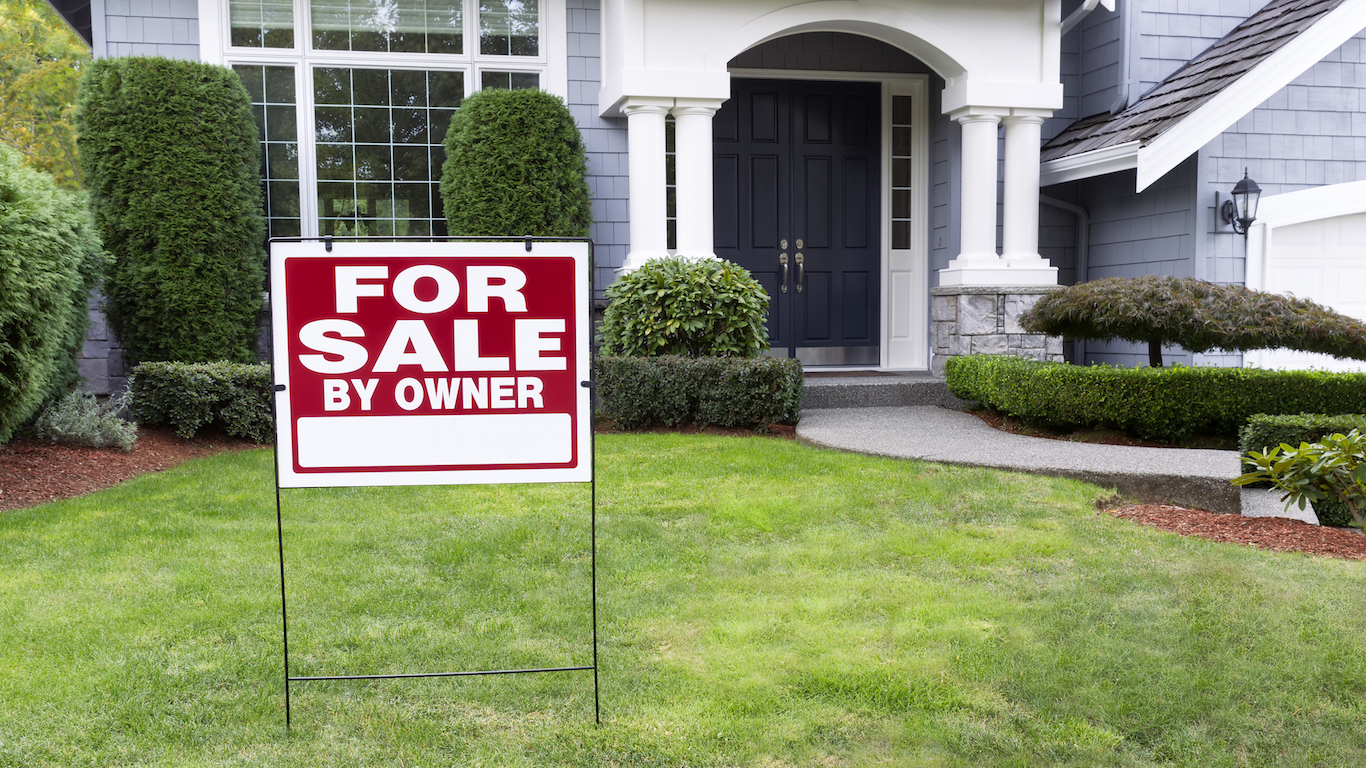Housing
Existing-Home Sales Slip for Third Straight Month; Median Price at All-Time High

Published:
Last Updated:

The National Association of Realtors (NAR) reported Monday morning that the seasonally adjusted annual rate of existing-home sales in June decreased by 0.6% to a seasonally adjusted annual rate of 5.38 million from a downwardly revised rate of 5.41 million in May.
The May decrease followed a 2.5% decline in April sales and leaves existing-home sales down 2.2% year to date compared with 2017. The consensus estimate called for sales to reach 5.45 million, according to a survey of economists polled by Bloomberg.
In 2017 existing-home sales rose 1.1% year over year, the best level in 11 years. The seasonally adjusted annual rate came in at 5.51 million, the highest since posting 6.48 million in 2006.
The NAR’s chief economist, Lawrence Yun, said:
There continues to be a mismatch since the spring between the growing level of homebuyer demand in most of the country in relation to the actual pace of home sales, which are declining. The root cause is without a doubt the severe housing shortage that is not releasing its grip on the nation’s housing market. What is for sale in most areas is going under contract very fast and in many cases, has multiple offers. This dynamic is keeping home price growth elevated, pricing out would-be buyers and ultimately slowing sales.
Housing inventory increased by 4.3% in June to 1.95 million homes, equal to a supply of 4.3 months, up from 4.2 months in June 2017. That breaks a string of 37 consecutive months of year-over-year inventory declines.
According to the NAR, the national median existing-home price for all housing types in June was $276,900, a second consecutive all-time high. The median price rose 5.2% compared with June 2017, the 76th consecutive month of rising home prices. In May the national median price was $264,800.
The percentage of first-time buyers was unchanged month over month at 31%. For all of 2017, first-time buyers accounted for 34% of sales, down one percentage point compared with 2016.
Sales of single-family homes fell 0.6% from the May total of 4.81 million to a seasonally adjusted annual rate of 4.76 million and are down 2.3% compared with June 2017. Sales of multifamily homes remained unchanged in June at a seasonally adjusted annual rate of 620,000 units.
All homes were on the market for an average of 26 days in June, unchanged month over month and down from 28 days in June 2017. Foreclosure (2%) and short (1%) sales accounted for 3% of all June sales, unchanged compared with the prior month and down from 4% in June 2017. The percentage of distressed sales remains at its lowest level since the NAR began tracking it in October 2008.
The NAR also reported the following regional data:
May existing-home sales in the Northeast jumped 5.9% to an annual rate of 720,000 but remain down 4.0% compared with June 2017 sales. The median price in the Northeast was $305,900, up 3.3% compared with June of last year.
In the Midwest, existing-home sales inched up 0.8% to post an annual rate of 1.27 million in June, but down 3.1% compared with the June 2017 rate. The median price in the Midwest was $218,800, up 3.5% from a year ago.
Existing-home sales in the South slipped 2.2% in June to an annual rate of 2.25 million but rose 0.4% compared to June 2017 sales. The median price in the South was $237,500, up 2.7% from a year ago.
Existing-home sales in the West dropped 2.6% to an annual rate of 1.14 million in June and are down 5% compared with June 2017 totals. The median price in the West was $417,400, up 10.2% compared with the June 2017 median.
After two decades of reviewing financial products I haven’t seen anything like this. Credit card companies are at war, handing out free rewards and benefits to win the best customers.
A good cash back card can be worth thousands of dollars a year in free money, not to mention other perks like travel, insurance, and access to fancy lounges.
Our top pick today pays up to 5% cash back, a $200 bonus on top, and $0 annual fee. Click here to apply before they stop offering rewards this generous.
Flywheel Publishing has partnered with CardRatings for our coverage of credit card products. Flywheel Publishing and CardRatings may receive a commission from card issuers.
Thank you for reading! Have some feedback for us?
Contact the 24/7 Wall St. editorial team.